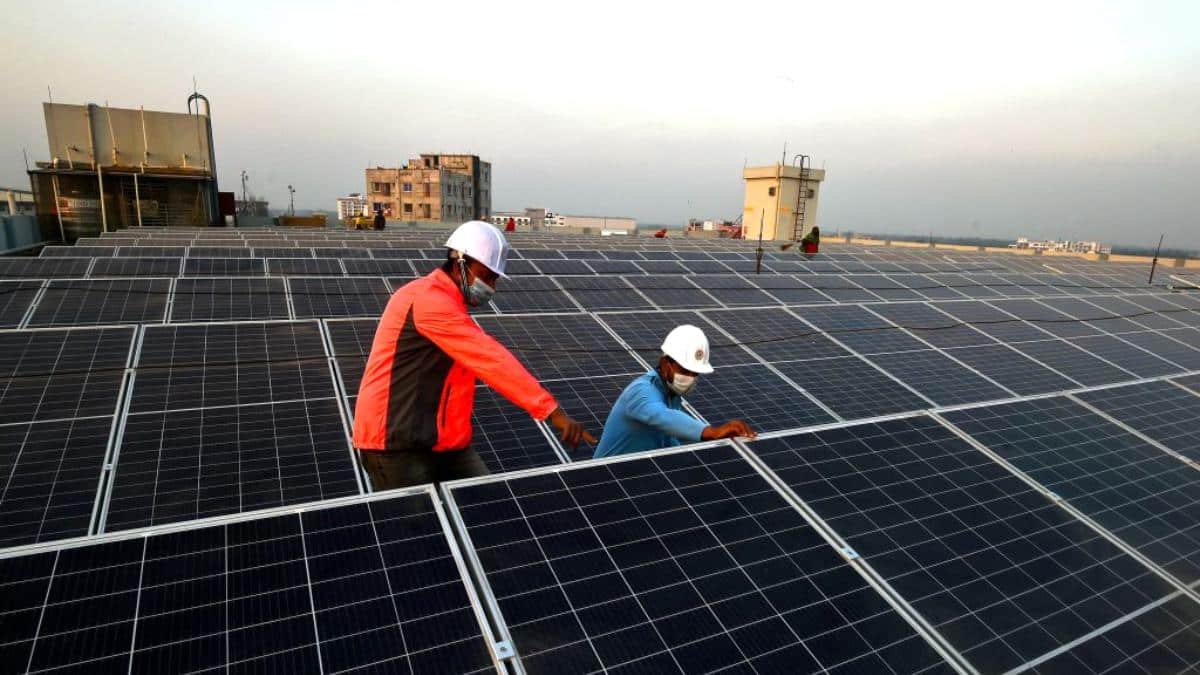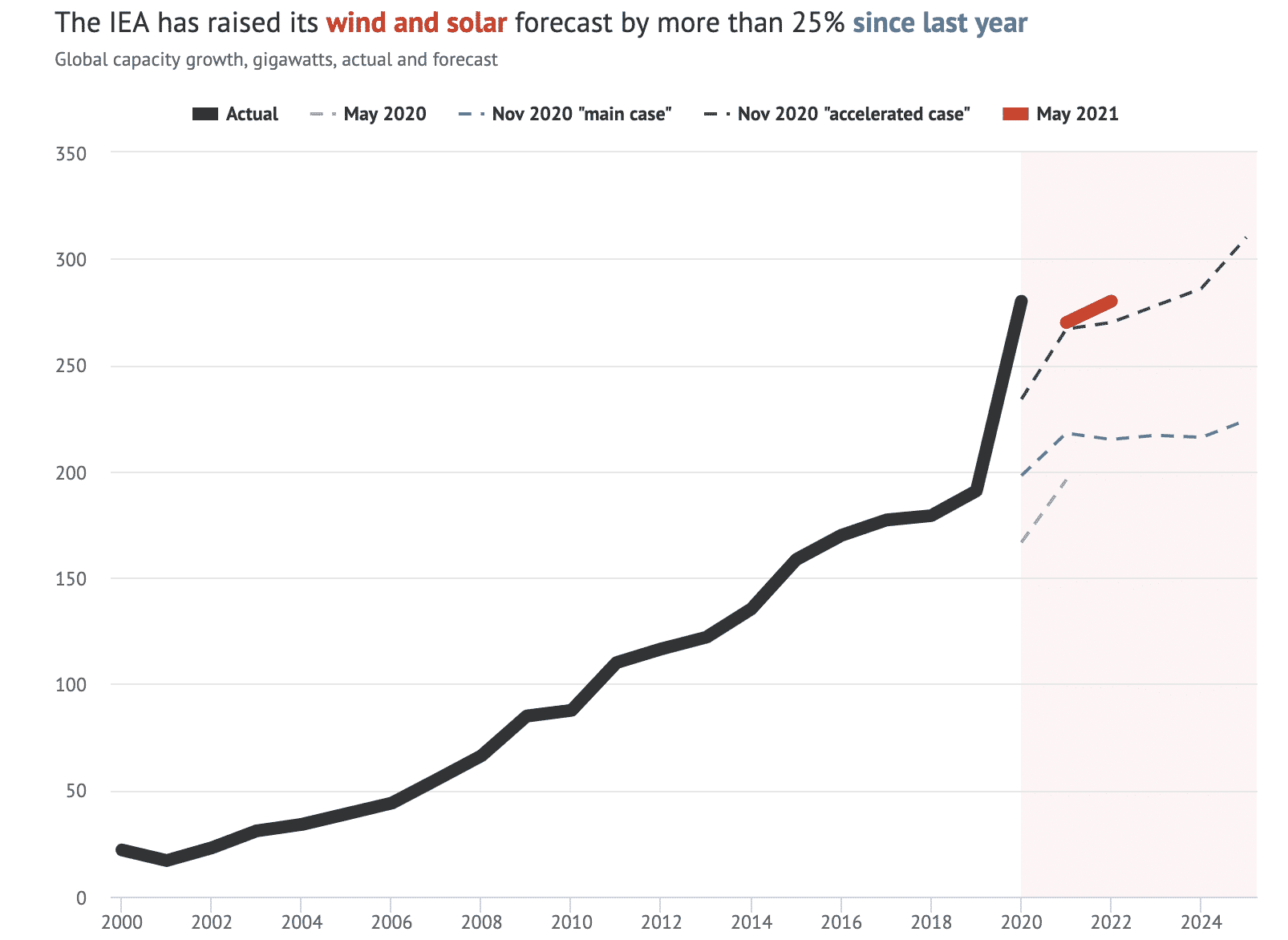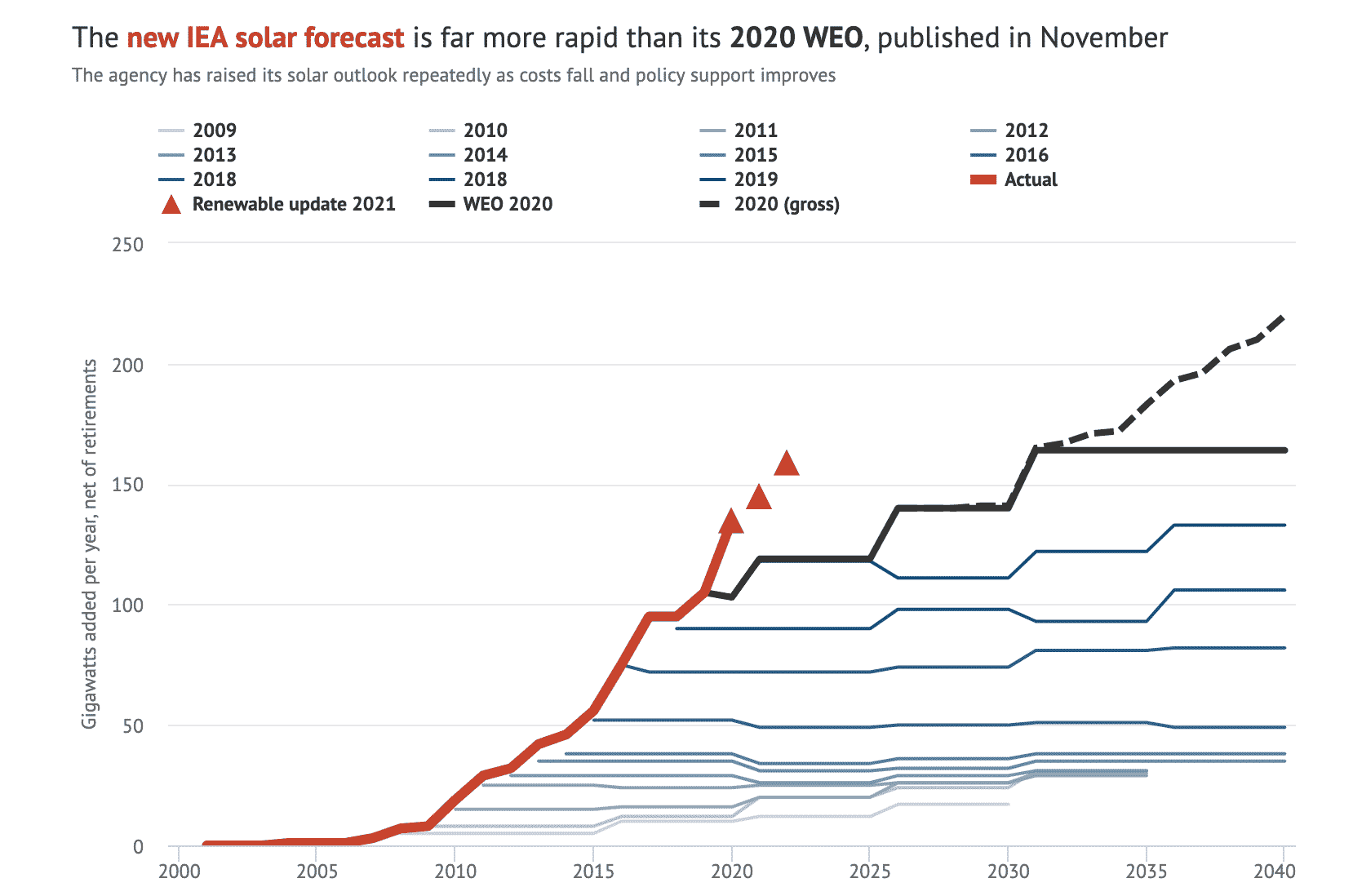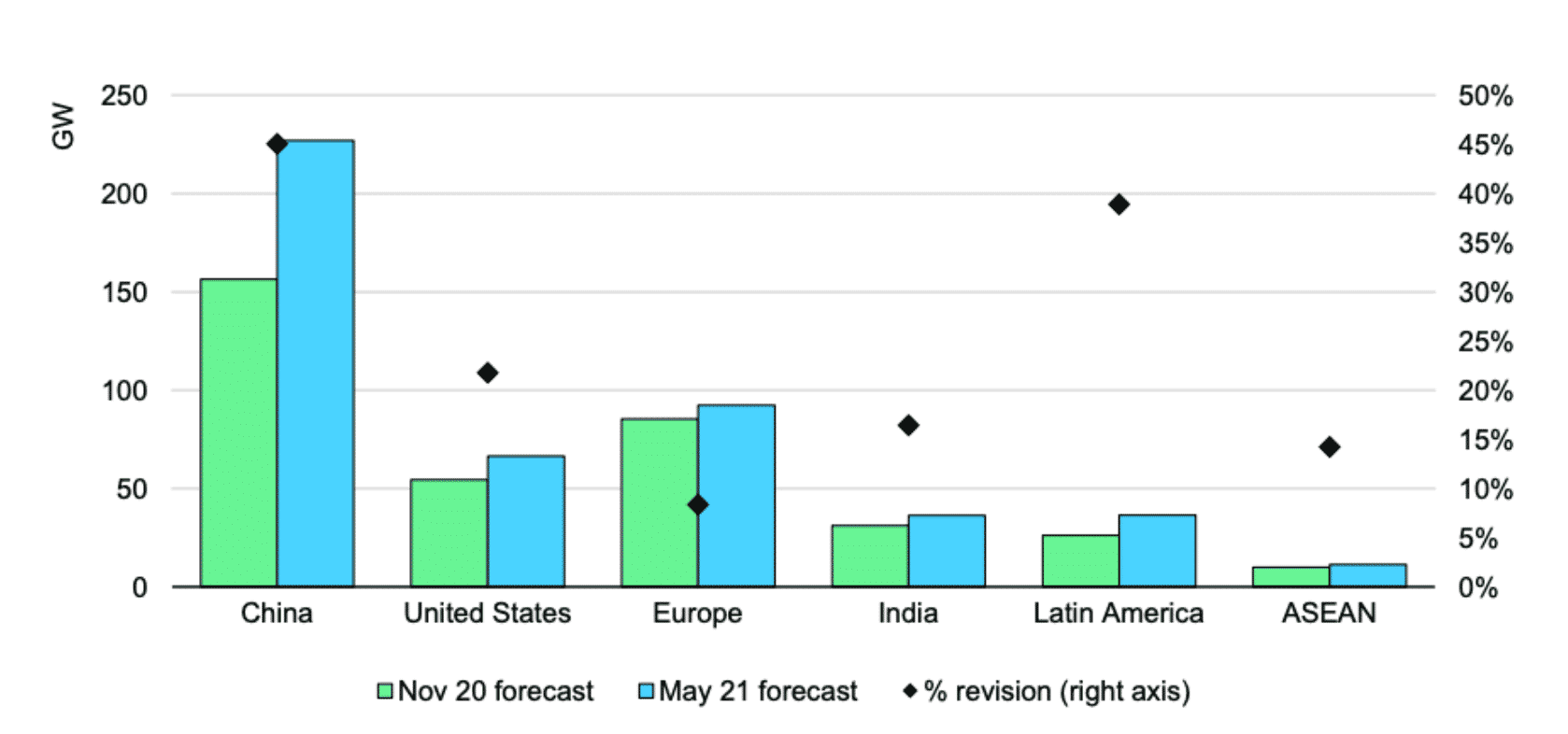
‘Exceptional New Normal’: IEA Raises Growth Forecast for Wind and Solar by Another 25%

By Simon Evans
The International Energy Agency (IEA) has raised its forecast for the global growth of wind and solar by another 25% compared to figures it published just six months ago.
Furthermore, the IEA’s “renewable energy market update” forecasts nearly 40% higher growth in 2021 than it expected a year ago, putting wind and solar on track to match global gas capacity by 2022.
The Paris-based agency says a “huge” 280 gigawatts (GW) of renewable capacity – primarily wind and solar – was installed globally last year, some 45% higher than the level in 2019, after the largest annual increase in more than 20 years.
This “exceptional” level of annual additions will become the “new normal” in 2021 and 2022, the IEA says, with the potential for further acceleration in the years that follow.
Overall, the IEA says that renewables accounted for 90% of new electricity generating capacity added globally last year and that they will meet the same share in each of the next two years.
Raising Renewables
In its latest update, the IEA says wind and solar growth forecasts have been “revised upwards by over 25% from last year.”
This is based on comparing the new forecast for growth in 2021 (red line in the chart below) to the “main case” published in November 2020 (dashed mid blue). Looking at the figures for 2022, the IEA’s new forecast is 30% higher than the main one it published last November.
Annual global growth of wind and solar capacity, 2000-2025. Actual growth is shown in black, while various IEA forecasts are shown in red and shades of blue. Source: Carbon Brief analysis of IEA forecasts. Chart by Carbon Brief using Highcharts.
Wind and solar are now expected to surpass even the “accelerated case” outlined by the agency in November 2020 (dashed dark blue), in which they matched global gas capacity by 2022.
Moreover, the new forecast for 2021 is nearly 40% higher than the one published by the IEA just a year ago, in May 2020 (dashed light blue line).
At the time, the agency had expected renewable additions to be badly hit by the unfolding COVID-19 pandemic, but impacts on the sector were largely confined to the first quarter of the year.
Raise, Repeat
The IEA has repeatedly raised its expectations for wind and solar over the past decade, drawing fire from critics that say – in the words of a 2019 Reuters article – that it has “underplay[ed] the speed at which the world could switch renewable sources of energy.”
Last year’s flagship IEA World Energy Outlook made a major update to the agency’s assumptions about the costs of financing the construction of wind and solar over the next two decades. This gave a significant boost to the agency’s expectations for the growth of renewables.
But today’s new report, which focuses on near-term growth in 2021 and 2022, contains even higher forecasts for wind and solar growth.
This is shown for solar in the chart below, with red triangles marking the solar growth figures in today’s report, the red line showing historical data and the blue and black lines showing successive World Energy Outlooks for solar over the next 20 years, as published between 2009-2020.
Gigawatts of solar capacity added around the world each year (red line) and the IEA renewable market update 2021 (red triangles), as well as IEA World Energy Outlooks published between 2009-2020. Source: Carbon Brief analysis of IEA reports. Chart by Carbon Brief using Highcharts.
Explaining its new forecasts, the IEA points to a number of changes over the past year, as well as areas where its earlier expectations have proved too pessimistic.
The biggest changes in this year’s forecast are for China, the IEA notes, where more projects are going ahead without government subsidies than expected. The update says:
“The pipeline of solar PV and wind plant projects accepting provincial electricity prices without additional subsidies has increased since last year, resulting in a more optimistic forecast.”
The IEA has, therefore, increased its forecast for growth in China by 45%, boosting total additions in 2021 and 2022 from around 150GW to around 230GW, as shown in the chart below.
Wind and solar growth during 2021 and 2022, according to the IEA’s November 2020 forecast (green) and its May 2021 figures (blue). Forecast capacity growth is shown by the bars and the left axis. The percent revision between forecasts is shown by the dots and the right axis.Source: IEA Renewable Energy Market Update 2021
The new China forecast for 2021 and 2022 is lower than the growth seen in 2020, when developers rushed to secure subsidies before they expired, but the IEA now sees less of a slowdown than it had previously expected.
Elsewhere, the IEA has boosted its U.S. forecasts by more than 20% thanks to the expected extension of renewable energy tax credits.
The forecast does not yet include the Biden administration’s new emissions reduction targets or its infrastructure bill, which the IEA says would boost renewable growth after 2022, if enacted.
It also points to better-than-expected solar auction volumes in India during 2020, but adds that the ongoing COVID-19 surge in the country creates “short-term uncertainty.”
The IEA says there were “record-breaking” competitive auctions for renewable contracts last year, with India and China securing almost 55GW of new capacity at average prices of $60 per megawatt hour (MWh) for wind and $47/MWh for solar.
There was another record-breaking year for corporate renewable energy deals, the IEA adds, with companies signing “power purchase agreements” for nearly 25GW in 2020 – a 25% increase.
In a press release announcing the new figures, IEA chief executive Fatih Birol says:
“Wind and solar power are giving us more reasons to be optimistic about our climate goals as they break record after record. Last year the increase in renewable capacity accounted for 90% of the entire global power sector’s expansion…A massive expansion of clean electricity is essential to giving the world a chance of achieving its net-zero goals.”
The update says renewables will again meet 90% of the global power sector’s capacity growth in 2021 and 2022.
Reposted with permission from Carbon Brief.

 233k
233k  41k
41k  Subscribe
Subscribe 


